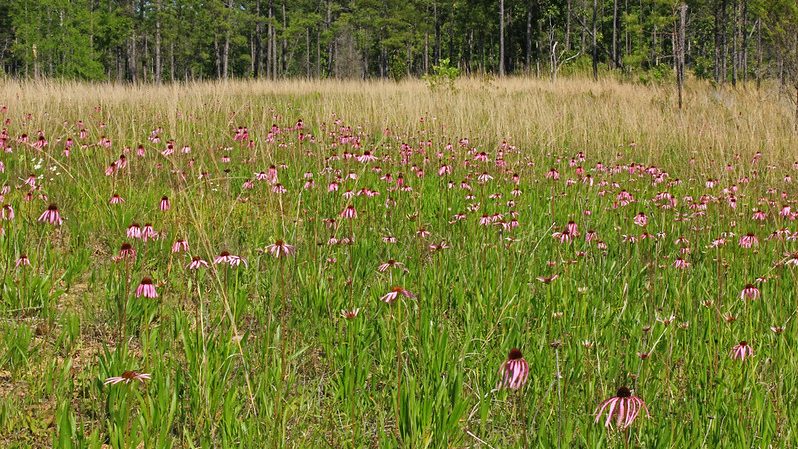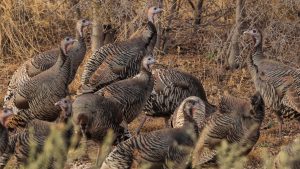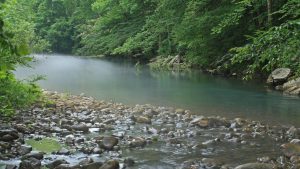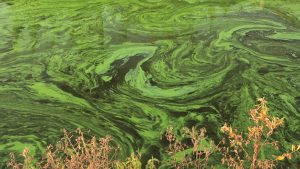Southeast CASC Initiates Three New Actionable Science Projects

Research funded by the Southeast Climate Adaptation Science Center encompasses a range of science activities that contribute to understanding the exposure and impacts of global change on resources that matter to our partners and to framing decisions about adaptation strategies, emphasizing principles of co-produced actionable science. Learn more about three newly initiated actionable science projects below and be on the lookout for more projects to be announced as they commence.

Assessing the Climate Vulnerability of Wild Turkeys Across the Southeastern U.S.
Principal Investigator: Krishna Pacifici, North Carolina State University
Expected End Date: July 2023
Project Overview:
Local and broad-scale regional changes in precipitation and temperature associated with a changing climate can lead to changes in food and cover for wildlife, including species that are hunted. If wildlife species do not adapt to these weather and climate changes, the timing of their reproductive activities may become mismatched with the timing that maximizes the amount of food available to young, leading to failed reproduction and ultimately to population declines. Wild turkey (Meleagris gallopavo) is a culturally and economically important game species that has shown dramatic declines in abundance through most portions of the southeastern U.S. A possible explanation for these declines is that the timing of nesting has shifted to earlier in the year while at the same time hunting seasons have remained static. Wild turkeys are the only gamebird in the contiguous United States that are hunted during the reproductive season, so premature harvest of mature adult male turkeys may disrupt reproductive behaviors and reduce output of young.
Researchers are using >10 years of reproduction data for wild turkeys from six states to explore the combined effects of climate and hunter harvest on wild turkeys to help guide localized harvest regimes (e.g., timing of the hunting season) across the region. They will assess the relative importance of short-term weather events, longer-term weather shifts, and extreme weather events like hurricanes on the variation in timing of nest initiation and the survival of nests across the enter region and for over a decade.
In the face of ongoing climate change and the projected future weather extremes for the Southeast, the results will help managers make projections about the overall influence of climate on reproduction in wild turkeys, directing adjustment of the timing of hunter harvest and bag limits if needed.

Brook Trout Population Responses to Climate Variation Across the Southeast
Principal Investigator: Mevin Hooten, USGS CO Cooperative Fish and Wildlife Research Unit
Expected End Date: April 2023
Project Overview:
The project aims to characterize how climate change impacts on brook trout (Salvelinus fontinalis) populations differ over space in the Southeast USA. Brook trout are the only native salmonid in the region, but their populations have suffered the most precipitous declines within their native range. In the Southeast, brook trout persist in small, isolated headwater streams of the Appalachian Mountains. Given the lack of dispersal, their populations are regulated primarily by local-scale abiotic factors such as stream temperature and flow. However, thermal and flow regimes differ among streams, mediated by landscape features such as elevation, gradient, surficial geology, and groundwater. How climate interacts with specific local conditions to drive brook trout population dynamics remains unexplored at the regional scale, but this knowledge is critical when prioritizing management actions (e.g., translocations, habitat restoration, non-native trout removal) by identifying populations at greater risk and with higher resiliency. The researchers will evaluate the utility of GIS-derived indices of groundwater input (i.e., thermal stability) using stream temperature data at >200 locations, and develop a spatially- explicit Bayesian hierarchical model that accounts for removal sampling data (>300 locations) to synthesize populations responses to climate variation. They hypothesize that site-to-site variation in trout responses to climate can be partly explained by habitat characteristics, and test the relative importance of several habitat characteristics, in particular groundwater influences as a driver to sustain trout populations. Products of this study will be a regional brook trout and habitat data set from multiple sources, statistical models, and trout population vulnerability maps.

Clarifying Science Needs for Determining the Impact of Climate Change on Harmful Algal Blooms in the Southeastern United States
Principal Investigators:
Thomas Byl, USGS Lower Mississippi-Gulf Water Science Center
Jennifer Cartwright, USGS Lower Mississippi-Gulf Water Science Center
Champagne Cunningham, USGS Lower Mississippi-Gulf Water Science Center
Expected End Date: March 2022
Project Overview:
The southeast United States has many lakes, streams and reservoirs that serve as important drinking water sources, recreational, agricultural, and ecological uses. Unfortunately, harmful algal blooms are becoming more common in these waters, causing health issues for humans and animals. While it is clear that nutrients stimulate algae growth, it isn’t clear if there are other parameters that stimulate the development of harmful algal blooms. The scientific literature describes additional parameters that may affect algae growth, such as storm occurrence, temperature, dissolved metals, erosion of soils, length of growing season, and hydroperiod. This project will address these different parameters and examine how climate change influences these parameters. We will review existing information in the literature to organize and summarize what is known. We will also reach out to scientists and reservoir managers in the southeastern United States to learn from their experiences and articulate their concerns about harmful algae. This information will be compiled and organized into a comprehensive report that will provide water-resource managers with a clearer picture of the role that climate change and different environmental parameters play in algal blooms. It will also point out weakness in the literature and identify topics that need further study to clarify their importance. A shorter, straightforward bulletin will be written and shared with the public to raise awareness of how climate change will affect development of harmful algal blooms.
Learn more about Southeast CASC science priorities and explore our projects by Fiscal Year or Science Theme.
- Categories:
